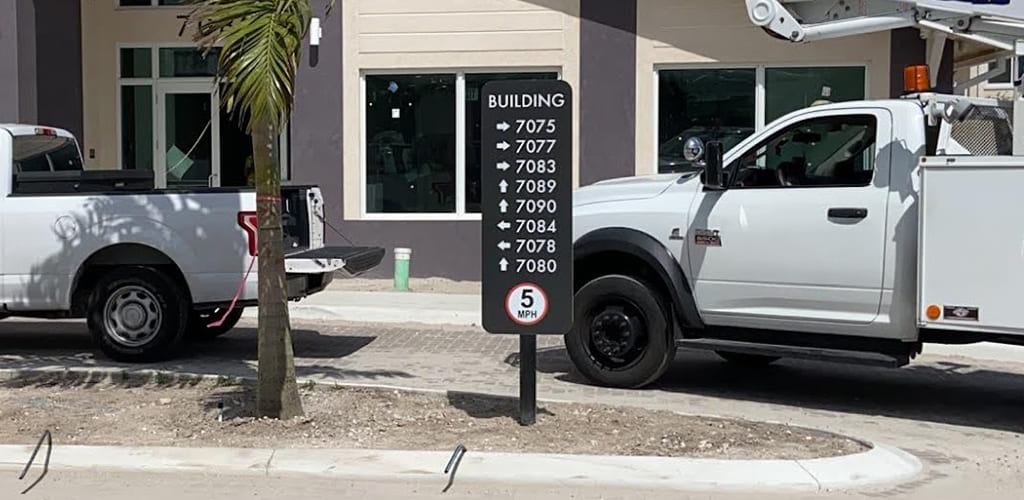Wayfinding signage is an essential part of any building, especially in complex environments such as hospitals, universities, shopping centers, and residential buildings. It helps people navigate efficiently and safely, preventing confusion and improving the overall visitor experience. If you’re in the construction industry this article is for you. As a company specializing in UV printing for signage, at RVA Marketing, we share everything you need to know about wayfinding signage and how to ensure it meets regulations and delivers the best quality.
What is Wayfinding Signage?
Wayfinding signage refers to any type of sign that guides people within a space, helping them navigate from a starting point to a specific destination. This includes directional signs, maps, instructions, and any other indicators that make movement easier.
It is especially important in large and complex buildings, where visitors might feel lost or confused without proper guidance. In places like hospitals or universities, where foot traffic is high, wayfinding signage can be the difference between a positive experience and frustration from not finding the right location.
Why is Wayfinding Signage Crucial?
- Compliance with Local and State Regulations: In states like Florida, Texas, and Georgia, wayfinding signage must meet specific standards. This includes regulations related to accessibility, such as Braille and proper sign height. Adhering to these requirements is essential for ensuring safety and accessibility for all users, especially those with disabilities.
- Improves User Experience: Clear and consistent signage reduces visitor anxiety and allows them to navigate the building smoothly. This is especially important in hospitals or public buildings where users are unfamiliar with the space.
- Prevents Visual Clutter: Wayfinding signage should be simple, direct, and not overload the space visually. A well-thought-out design helps people quickly understand which path to take without feeling overwhelmed by too much visual information.
- Reinforces Brand Identity: Wayfinding signage is not just functional; it’s also an opportunity to reinforce the building’s visual identity or the client’s brand. Colors, typography, and materials should align with the overall design of the space, creating a cohesive visual experience.
Key Aspects for Creating Effective Wayfinding Signage
1. Clear and Simple Design
Signage should be legible and easy to understand. Use clear typography, contrasting colors, and universally recognized symbols. Signs should be visible from a distance and placed strategically where users can see them without searching too much.
2. Accessibility
Compliance with accessibility standards is essential. This includes using Braille on all relevant signs, especially in public access areas like elevators, restrooms, and main entrances. At RVA Marketing, we ensure that all our signage solutions are 100% aligned with local codes and regulations, providing an accessible experience for everyone.
3. Consistency in Design
Consistency is key in wayfinding signage. Make sure all signs follow a uniform design system throughout the building. This includes using the same colors, typography, icons, and formats so that users can quickly identify the purpose of each sign.
4. Strategic Placement
The placement of signs is crucial. Position them where users can see them before making decisions, such as at entrances, main hallways, or intersections. Signs should guide progressively, from general points to more specific destinations.
5. Use of Technology
Modern technology also plays a significant role in wayfinding signage. Digital maps and interactive signs can provide more detailed and personalized information. Consider integrating digital solutions to help navigate large and complex buildings.
How to Ensure Code Compliance and Quality in Signage
At RVA Marketing, we specialize in creating signage solutions that comply with local and federal regulations, ensuring that all our products are accessible and of high quality. We work with durable materials like acrylic and use UV printing, which ensures greater resistance to wear, fading, and damage from sun exposure or extreme weather conditions—common in states like Florida, Texas, and Georgia.
Additionally, we make sure all our signs are designed according to accessibility standards, including Braille and other necessary features to meet ADA (Americans with Disabilities Act) requirements.
